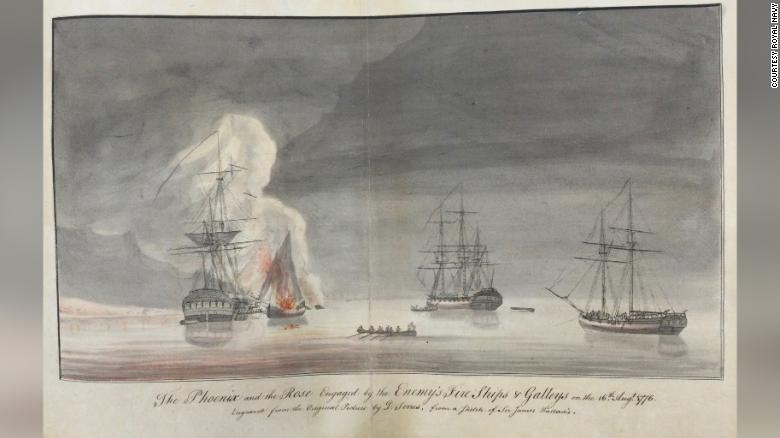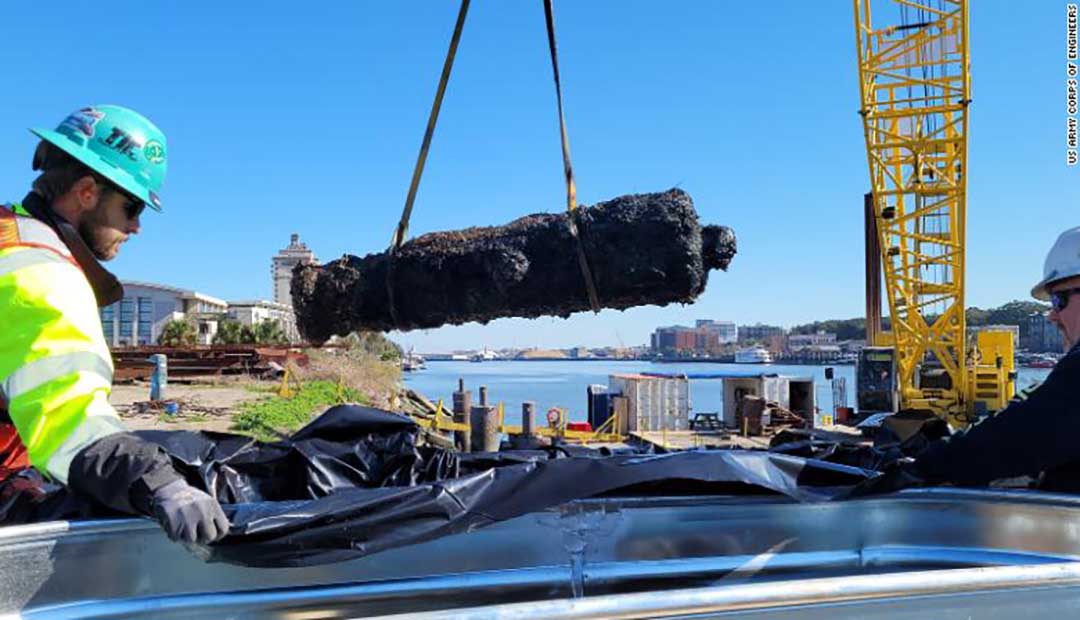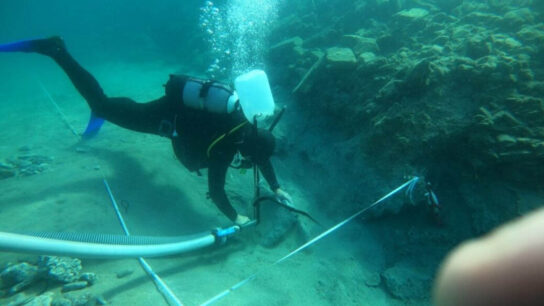18th-Century Cannons Recovered in Georgia
Archaeologists have hauled up 12 more Revolutionary War-era cannons from the Savannah River, a remarkable find that raises questions about which vessels carried them and precisely how they ended up in the water. The local district of the US Army Corps of Engineers, which is in charge of the deepening of the channel in Savannah’s busy harbour, on Tuesday posted a video and photos about the discoveries.
Last month’s raising of the rusted artifacts brings to 15 the number of cannons, plus fragments of another, found in the past year during preparation for the port expansion project.
“There is no telling what all is down there,” Corps district archaeologist Andrea Farmer told CNN, saying “so much of the river is unknown.”
That’s because the river bottom is strewn with everything from Native American pottery that was pushed downstream, to a small amount of debris from a Civil War ironclad that sank in 1864 and other vessels lost over time in the colonial Georgia city. Archaeologists said they would have expected the cannons to have been found during maintenance dredging.
When the first three cannons were located during dredging last February east of the town’s famous River Street, near Old Fort Jackson, archaeologists and Britain’s Royal Navy offered an intriguing possibility about their source.

They said — based on measurements and appearance — the cannons may be from the HMS Rose, a famed British warship that mixed it up with colonists during the revolution or, as the UK calls it, the War of Independence. Nearly 250 years ago, the British scuttled the ship in the Savannah River to block the channel and prevent French ships from coming to the aid of colonists trying to retake the city.
But they quickly learned that theory does not hold water, so to speak. The HMS Rose, it turns out, was sunk farther up the river and its artillery was removed beforehand. British archives indicate the cannons may have belonged to two or more British troop transports also sunk to block the channel. Farmer says officials believe the cannons are associated with the Revolutionary War. Experts are looking for any distinguishing marks or features that can help verify their provenance, such as a known inventory of what a ship was carrying. The goal is to match the artifacts with a specific vessel or wreck.
So why were British troops in Savannah?
A short refresher course might be to answer that question.
The 13 colonies, determined to gain their independence, fought the forces of King George III on land and sea. The British, hoping they would gain support from royalists in the South, took Savannah in 1778, only to find themselves defending it less than a year later. The HMS Rose, with its 20 cannons and 160 sailors, and other vessels were brought in to help fellow Redcoats.
The warship was already famous, having been a “scourge” on the colonists, as the Royal Navy puts it. It quelled smuggling in Rhode Island, prompting the formation of the forerunner of the US Navy. The Rose fought in and patrolled New York waterways and parts of the Eastern Seaboard before it sojourned south. In Savannah, the vessel was sacrificed by the Royal Navy on September 19, 1779, to keep French allies from joining the American siege at that point in the river.

“The French had blockaded the port of Savannah, getting ready to attack,” Stephen James, an archaeologist with Commonwealth Heritage Group, says in the Corps video. “They scuttled these troop transports to keep the French out and saved the city early on from being taken over. They plugged the channel to where … the French could not come up and take the city.”
The cannons may have belonged to the HMS Venus or HMS Savannah, which were burned or scuttled as part of the British strategy. The British eventually won the battle and controlled Savannah until almost the war’s end. The cannons appear to date to the mid-1700s — predating the Civil War by about a century — which aligns closely with the HMS Rose’s history. The ones found last February are about 5 feet long. Further study and the removal of sediment on the cannons may provide information on when and where they were manufactured.

“I think it’s fantastic and interesting when artifacts from maritime history come to light,” Cmdr. Jim Morley, serving as the UK’s assistant naval attache in Washington, told CNN last year. “It just allows us to look back at our common maritime history and history in general.”
CNN reached out Tuesday to Morley for further comment.
More research and analysis lies ahead
The Army Corps of Engineers utilizes contractors for much of its work, and that is the case with historic artifacts found in the water, such as the cannons found in a deep spot called the Five Fathom Hole. Salvage divers assisted Commonwealth Heritage Group in lifting the ordnance from the channel. Divers can work only during high or low tide and when no freighters are passing directly overhead. Conditions are hazardous and the government has discouraged treasure hunters from diving in these waters. A diver enters the water in December 2021. Crews have explored Revolutionary War and Civil War sites.
“The tide turns and it turns like that. You got zero vis (visibility),” diver Richard Steele says in the video. “The current is ripping you, you are holding on for dear life half the time, trying to hike your way through down there. Every time you get in the water, you are racing the clock.”
Crews placed slings beneath the cannons and used inflatable lift bags to free them from the mud. They were moved to a holding area in advance of the January recovery.

The cannons may come from several ships — whether for combat or ballast.
Farmer said she does not believe they are associated with the CSS Georgia, a Confederate ship that defended the city during the Civil War. It was stationed in the vicinity of Old Fort Jackson and where the 15 cannons were found.
Several cannons were pulled up several years ago when the wreckage of the CSS Georgia was removed by the Corps as part of the harbour deepening. Archaeologists involved in that project are now helping on the current one.
Robert Neyland, head of the underwater archaeology branch at the Naval History and Heritage Command, last year said it’s possible the Civil War ironclad carried older guns and more research was needed. It’s possible some of the cannons were used at Fort Jackson, which was constructed in the early 1800s, or elsewhere and discarded.
“You have to do the detective work to solve the mystery,” Neyland said at the time.
He could not be reached for comment Tuesday, but the NHHC said it received a report on the cannons from the Army Corps of Engineers “and looks forward to reviewing the data.”
Farmer says officials will identify a few of the artillery pieces — which are being kept in protective troughs — for conservation and, ideally, put them on exhibit in Savannah. The Corps, meanwhile, is in the final stages of deepening the harbour from 42 feet to 47 feet to make sure supertankers have ample room to navigate.
Besides the cannons, archaeologists using sonar have found anchors and bar shots, a type of munition designed to destroy ship rigging. They were commonly used during the Revolutionary War. Divers also studied “cribs” — underwater obstructions placed in the river to ward off Union ships during the Civil War. The Army Corps of Engineers’ Savannah office will provide more details to the media next week. An expert will provide an analysis of what has been learned. “They are still actively performing archival research and working with other experts on this, so they will have more information to share,” Farmer said.
The public will have a chance to learn more at 7 p.m. ET on February 17 during a free program at the Savannah History Museum. Face masks are required.




